Human oral cavity – the habitat of many bacteria that feel especially good in the mouth of a person who neglects hygiene. To understand how diverse their world is, scientists began to study the microorganisms that inhabit the human oral cavity, and with the help of pigments, they obtained stunning kaleidoscopic images. Estet-portal.com offers to see what came of it, as well as to find out what so impressed the researchers in the well-known dental plaque.
Mouth bacteria demonstrate miracles of organization
Using serial data combined with spectral fluorescence imaging techniques, the researchers were able to see highly organized associations of microbes living in the human oral cavity, more specifically, in dental plaque. The spatial structure of the association made it possible to see unexpected interactions and became an impetus for understanding the organization, metabolism and systemic biology of the microbiome, as well as its impact on human health.
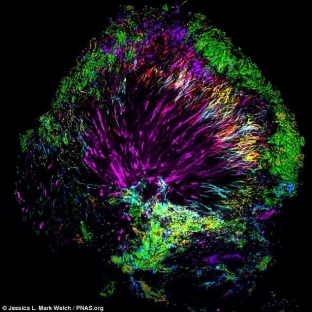
Jessica Mark Welch of Woods Hole Marine Biology Laboratory, Massachusetts and Gary Borisy of the Forsyth Institute took a plaque sample from 22 healthy volunteers who had been asked to abstain from any oral hygiene for 12– 48 hours.
Bacteria and their colors in pictures:

- Corynebacterium – corynebacterium;
- Streptococcus – streptococcus;
- Porphyromonas – porphyromonas;
- Haemophilus/Aggregatibacter – hemophilic/Aggregatibacter;
- Fusobacterium – spindle bacteria;
- Leptotrichia – leptotrichia;
- Capnocytophaga – capnocyophages;
- Neisseriaceae – Neisseria.
Using toothpicks, the researchers took plaque samples and placed them on a microscope slide, then washed them with a series of biological markers. Previously, researchers also resorted to this method, but with fewer samples. After carrying out the necessary manipulations, the researchers received a number of psychedelic pictures.
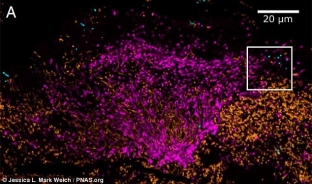
Borisi himself says: "When we got the first images, we were delighted with the fantastic structures we saw." The Corynebacterium located in the center turned purple, green streptococci and bacteria of other colors were scattered across the image.
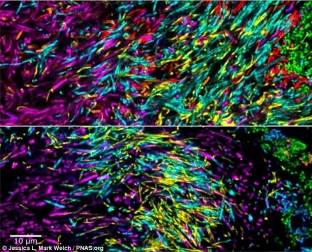
Bacteria of the oral cavity – amazing forest
National Geographic magazine compared the resulting image to a forest where Corynebacteria act as tree trunks and Streptococcus – as their crowns. Bacteria in the oral cavity appear to be organized and structured into groups. The investigators noted that Corynebacteria most commonly dominated subgingival and supragingival plaque.
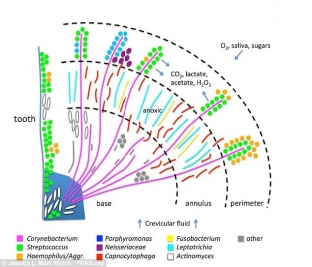
Bacteria in the oral cavity seem to be attached to a foundation of corynebacteria that settle in the enamel of the teeth and gradually expand upward.
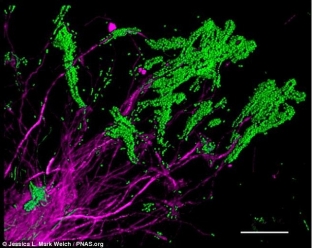
Streptococcus feeds on sugar and oxygen, while releasing lactate and hydrogen peroxide, which most bacteria try to avoid, except for the bacterium Aggregatibacter, which is able to break down peroxide and feed on lactates, so it manages to survive in the "krone"; tree.
In addition, streptococcus also releases carbon dioxide, which is necessary for the capnocyophage to stay comfortably in branches distant from the base.
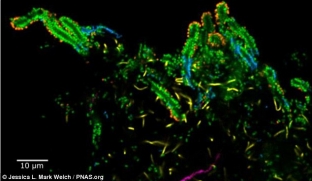
Because streptococcus reduces the amount of oxygen in the layer of corynebacteria, spindle bacteria also found a place in the "forest".
Researchers did not expect such an organization from oral bacteria. “This is what happens when you look at well-known things in a new way, in this case – plaque,” summarized Michael Fischbach of the University of California, San Francisco.
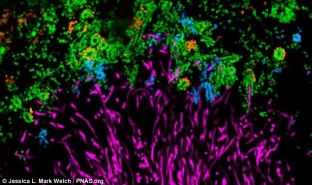
The degree of organization of oral bacteria, according to Fischbach, completely changes the idea of plaque: it is not just a chaotic mixture of bacteria, plaque is more like tissue, divided into substructures, which probably also perform separate functions.
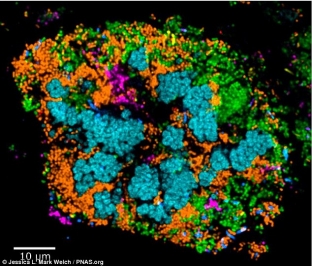






Add a comment